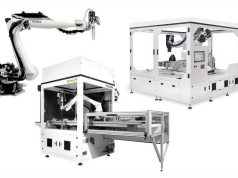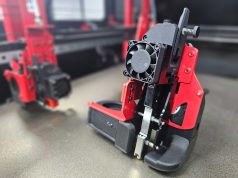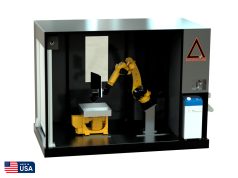DHL released its latest DHL Trend Report today – 3D Printing and the Future of Supply Chains. DHL has been testing a variety of both 3D printing hardware and techniques for several years and has identified applications that have potential to redefine manufacturing and supply chain strategies. While the 3D printing market is estimated to grow between US$180 billion and US$490 billion by 20251, the report however finds it will not become a substitute for mass-production but a complementary process.
Matthias Heutger, Senior Vice President, DHL Customer Solutions & Innovation, said: “The DHL Trend Report ‘3D Printing and the Future of Supply Chains’ recognizes 3D printing as a transformative technology. However, it is not a magic bullet that will render factory mass production and manufacturing obsolete. Its exciting potential lies more in its capability to simplify the production of highly complex and customizable products and spare parts – and this could bring logistics and manufacturing closer together than ever before.”
Redefining supply chain strategies
Also known as additive technology, 3D printing involves manufacturing products by layering heated plastic or metal injected from the nozzle of a 3D printer onto a plate to create a three-dimensional object, potentially replacing processes such as forging and molding at a fraction of the cost. It can lead to improved product quality, multiple products being made by a single printer, new types of products – and new supply chain strategies and models.
It has been adopted globally by the aviation, engineering, automotive and healthcare industries. Mercedes Benz Trucks has launched a 3D printed spare parts service and in healthcare, 3D printing allied to scanners is creating custom-made external and internal items from prosthetics to dental crowns. It is also being used for autonomous production in remote environments – a highly sought-after service by mining companies, space agencies, and the military to make critical spare parts.
A complementary technology
Factors currently limiting more widespread adoption of 3D printing – around since the 1980s – include lack of management knowledge, economic and technological issues. Many printers can use only one material and costs are still high for industrial-grade 3D printer. As well as facing warranty, liability and intellectual property issues, 3D printing needs to become faster, more agile and more advanced before it can become a core production technology.
Markus Kückelhaus, Vice President Innovation and Trend Research, DHL Customer Solutions & Innovation, said: “Not all products should, can or will be 3D printed. But encouraged by opportunities for greater customization, less waste, and more localized manufacturing and delivery, companies across many industry verticals are showing increasing interest in using 3D printing. A recent survey revealed that 38 percent of companies anticipate using 3D printing in their serial production within five years but not necessarily to completely replace traditional manufacturing.2 We believe 3D printing will have the most impact in the medium term on logistics in spare parts and individualized parts manufacturing.”
Greatest impact on spare parts logistics
The report ‘3D Printing and the Future of Supply Chains’ highlights opportunities for companies to team up with logistics providers offering 3D printing. These areas include ‘spare parts on demand’, a model that would cut enterprise storage costs; ‘end-of-runway services’ for fast production of time-sensitive parts, and ‘product postponement services’ to increase customization options and simultaneously reduce lead time to the customer.
Individualized direct part manufacturing and product postponement services, both led by customer demand for individualized products, could see manufacturing and assembly divided into stages with regional or locally located printers involved in the final production. Both would require completely new supply chain strategies.
A major focus for end-of-runway services are sector-specific service offerings and integrated return and repair services; printing could be leveraged here to enable fast production and dispatch of parts. This would be invaluable to the energy, engineering and manufacturing sectors – and could also improve warranty repair operations in the consumer sector too. Spare parts on demand could involve logistics companies in the supply chain in a revolutionary new way by printing the parts enroute to delivering them to the customer.
“As manufacturers adapt their production processes, new opportunities and challenges to the supply chain will be created. At DHL, we look forward to working with customers and partners to jointly explore new solutions and unlock the potential of 3D printing and integrate it into logistics and future supply chains”, added Matthias Heutger.
DHL, which has already trialled pop up 3D printing shops, recommends that companies involve their logistics partners in their 3D journey right from the assessment and analysis stage to maximise the potential rewards in terms of increased operational excellence and savings that the technology could supply.
Subscribe to our Newsletter
3DPResso is a weekly newsletter that links to the most exciting global stories from the 3D printing and additive manufacturing industry.

























